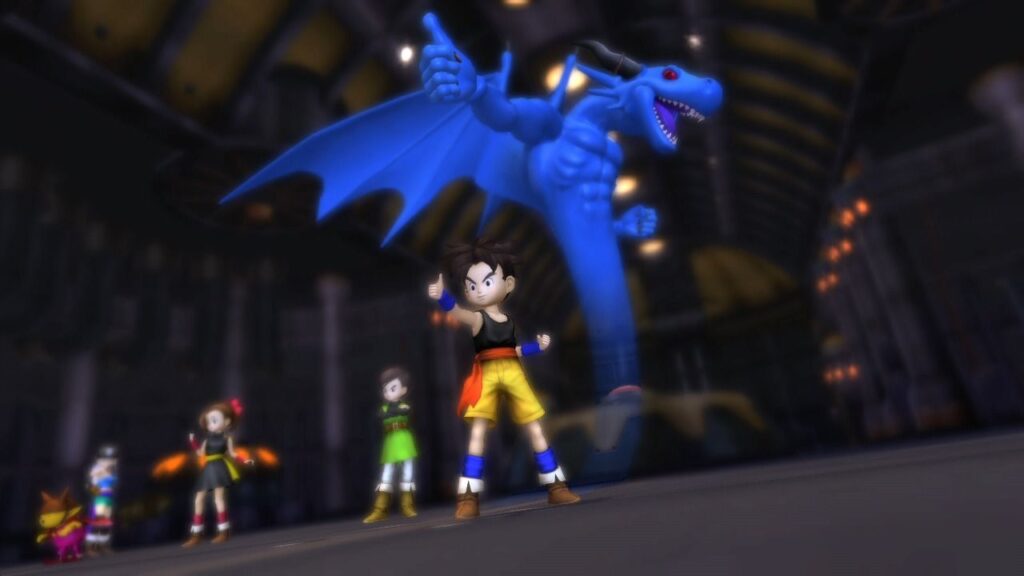
Venerable RPG maestro Hironobu Sakaguchi, was the man responsible for where Square Enix is today. Before the Enix and Squaresoft merging, Sakaguchi was the producer behind some of the most prolific JRPGs of all time; Chrono Trigger, Super Mario RPG, Parasite Eve, Front Mission, and of course, Final Fantasy.
The man is like a Japanese-George Lucas, fostering incredible talent in his studio, and knowing exactly what he wants in his games. Sadly, his eye for story-telling did not translate well into cinema, and Final Fantasy: The Spirits Within became his waterloo.
Sakaguchi left Squaresoft in shambles, and while they would eventually recover as Square Enix, the Final Fantasy creator would rebound with development studio Mistwalker, and would get publishing from Microsoft.
Microsoft had struggled with the Xbox penetrating the Japanese market through out the 2000s, and when it came to launching the Xbox 360 they needed something to draw them in. Blue Dragon would be the first release from this partnership. It failed to attract Japanese gamers, or most people, in spite of the creators’ best efforts to make a JRPG for everyone. Yet, they should have.
Blue Dragon
Developer: Mistwalker/Artoon
Producer: Microsoft Game Studios
Platforms: Xbox 360, Xbox One* (reviewed)
Release Date: August 28, 2007
Players: 1
Price: $19.99
*playable via Xbox One backwards compatibility

Blue Dragon has a lot of Chrono Trigger in its DNA. Akira Toriyama- who did the designs for both- brings his talents to the table, but with all the flair that the Xbox 360 can muster. There are also very subtle cues that are taken from it, such as the story’s theme of humanity’s relationship with technology. Robots in both games are depicted as beings of innocence that can be molded; nature vs nurture.
Aside from these subtleties, Blue Dragon is its own beast that does not feel like a off-brand Squaresoft game. Sakaguchi is a true auteur and while there are some themes that he relies on, there is still nothing quite like Blue Dragon.
The classic “hero’s journey” usually begins in his small village. Sakaguchi, not being one to start a story in a dull way thrusts, his protagonists into action at the very start; Shu, Kluke and Jiro.
Building intrigue early on is a great way suck people into a story. Cloud jumping off a train to begin his bombing mission, Sin destroying Zanarkand, and even a date at the opera with guests spontaneously combusting are all examples that <em>Blue Dragon</em> follows; three children fighting a robot shark.

What follows is a globe trotting quest to stick it to purple alien entity known as Nene, for destroying your home town. It is not long before the protagonists are endowed with the dark gift of magic, that allows them to summon a powerful shadow familiar. With their new abilities, the heroes find themselves embroiled in an ancient prophecy that involves a technological nightmare within their own planet.
Potent themes of the fear of rising technology are subliminally peppered through out what seems to be a surface level children’s adventure story. Constantly, Shu and crew are meeting characters who struggle with how technology is so aggressively overtaking their simple lives.
Blue Dragon‘s story is simple and told effectively. It is a traditional good vs evil affair, elevated thanks to its style and how focused the protagonists are. Shu and crew may not be the most complex of characters, but there is never a moment where the writing bungles motivations, or there are any holes in logic. The narrative is fairly paired back and efficient.

Most of the major plot events are back loaded, with the first 15-20 hours being world building and adventuring. There is not a lot going on after the initial action packed introduction, and it isn’t until the 2nd disc things start to pick up.
The stakes get really intense for a game that is seemingly aimed for children, and it is at the late moments in the story is where Blue Dragon proves itself to be a masterpiece.
The majority of the protagonists are children, and Sakaguchi takes sadistic glee in having them put in utterly traumatic circumstances to build incredible tension. The story unfolds with some major catastrophic turn of events that permanently change the world in big ways.

Blue Dragon has the distinction of being the first Xbox 360 game to span multiple DVDs. The main reason why was because the game relied heavily on beautiful HD pre-rendered cutscenes.
These segments hold up very well, and merge seamlessly with the in-game graphics thanks to Akira Toriyama’s deft art direction. Playing this on Xbox One X further enhances the presentation by smoothing out the frame rate, which could get rocky on the Xbox 360.
After all these years, Blue Dragon‘s visuals still impress. There are tons of individual NPCs, and environments are expansive with high attention to detail. There are many technological locations that are festooned with moving parts and impressive modeling, that flawlessly realize Toriyama’s panache for mechanical design.
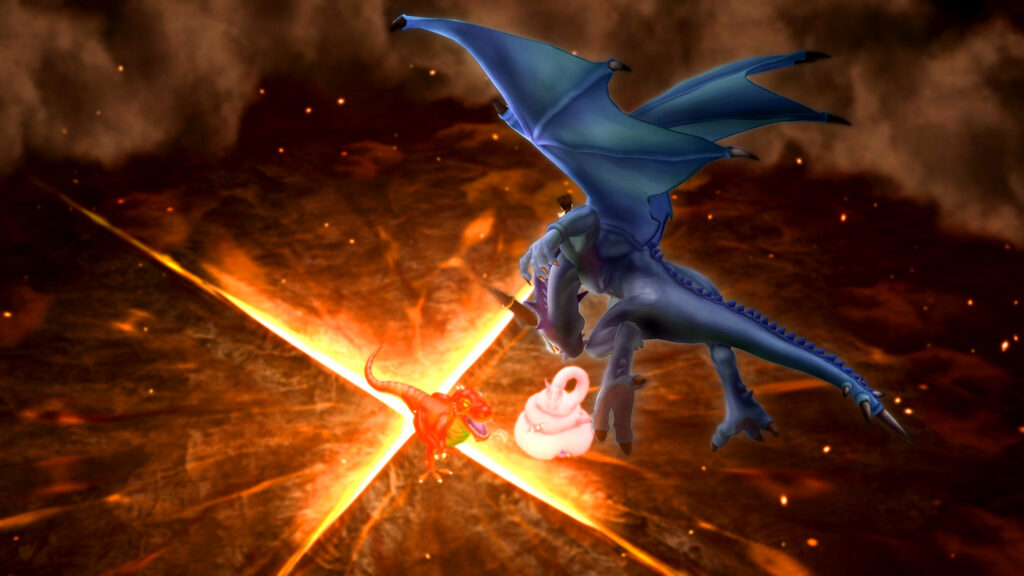
Even the many towns are dense with intricate details that tell a story, and minutia to make everything feel real. Some of the sights and visuals manage to be awe inspiring and even mind-bending. Other times, locations can evoke a palpable sense of serenity and catharsis.
Since Blue Dragon was an early Xbox 360 title, it did not shy from flexing the new effects it could generate. Bloom and photographic depth of field effects are aggressively used throughout the 60 hour adventure.
It all adds a tangibility to everything, making the characters feel like living dolls in a crafted physical diorama world. Distant areas are appropriately out of focus, giving a fantastic sense of scale.
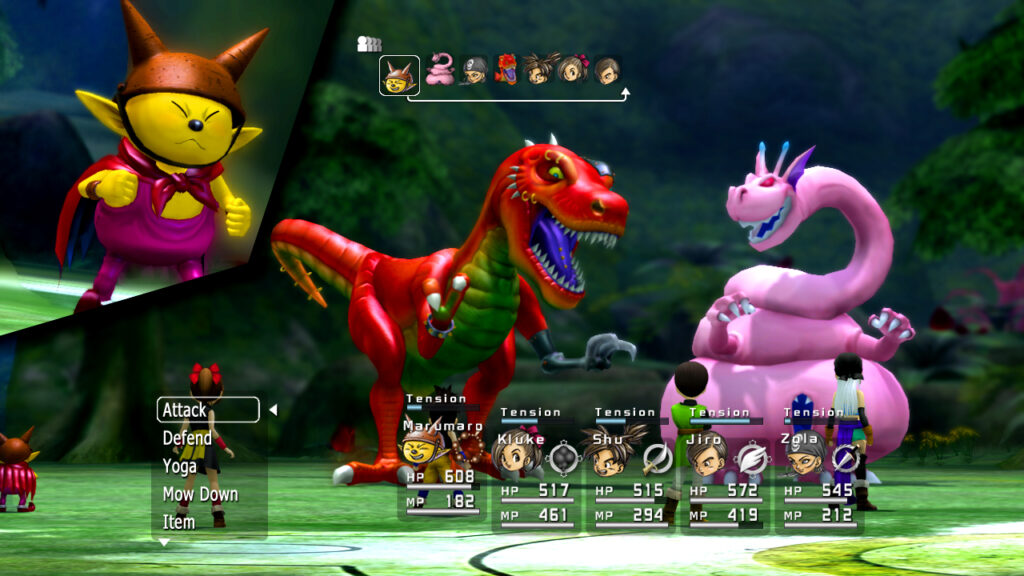
Blue Dragon’s combat makes use of a queue system like Final Fantasy X, to allow players to formulate strategies. Having this kind of information is vital to turning the battle in your favor, because there are a few spikes in difficulty that come abruptly. For the most part, players will be able to plan accordingly and dominate battles so long as they pay attention to the order of who’s turn its going to be.
The turn-based combat is pretty straight forward for the genre, and is elevated thanks to the visual flourishes that make fighting a spectacle. The effort put into the animation for the enemies and enormous shadows with sweeping camera moves and framing makes even the most basic battles have cinematic flair to them. Even after 40 plus hours, it won’t lose its magic.
The real substance of the combat is not even the actual confrontations with enemies or bosses; it is in the character building. Blue Dragon has a quasi-job system that is not unlike something from Final Fantasy: Tactics. The various types of fighter and mage classes have their own pools of abilities to learn, as each class can be leveled up individually.
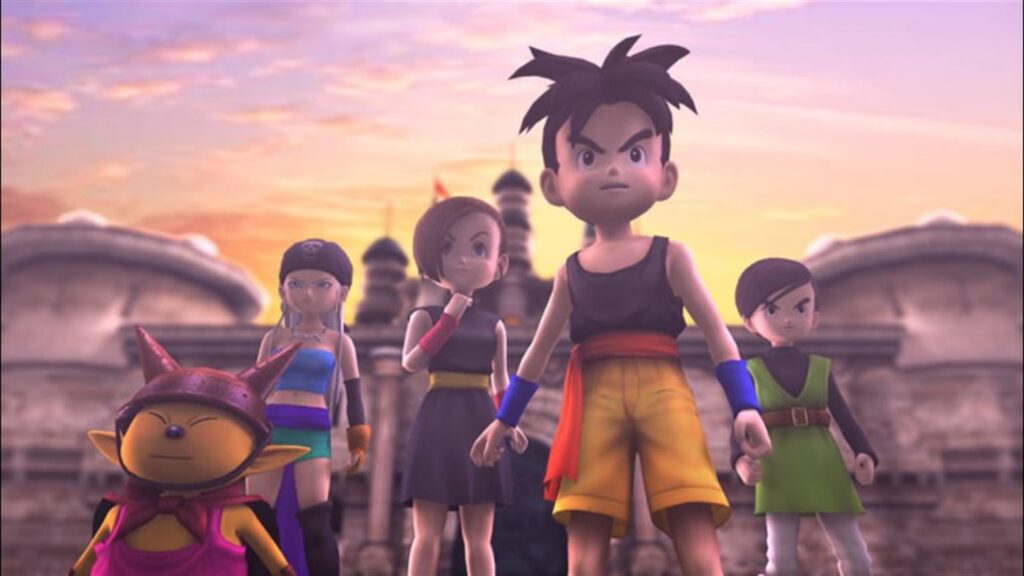
Each character has a set amount of ability slots that can be filled with any moves they have already learned. This kind of flexibility allows players to create very unique builds for every party member.
The “generalist” class is of particular note, since it is a weak class that learns abilities that expand the number of slots for skills and accessories a character can equip. This can lead to almost God-like stats and abilities that can make you immortal.
This kind of freedom to make such insanely powerful builds is a reward for those who put in the time to train and explore the world for useful items or accessories. The abilities that can be learned are not limited to just murdering helpless poo-snakes; there are some that have utility while exploring too.
There are skills like smoke-bomb that confuses enemies, or the barrier that drains MP at the cost of instantly killing any enemy it touches.
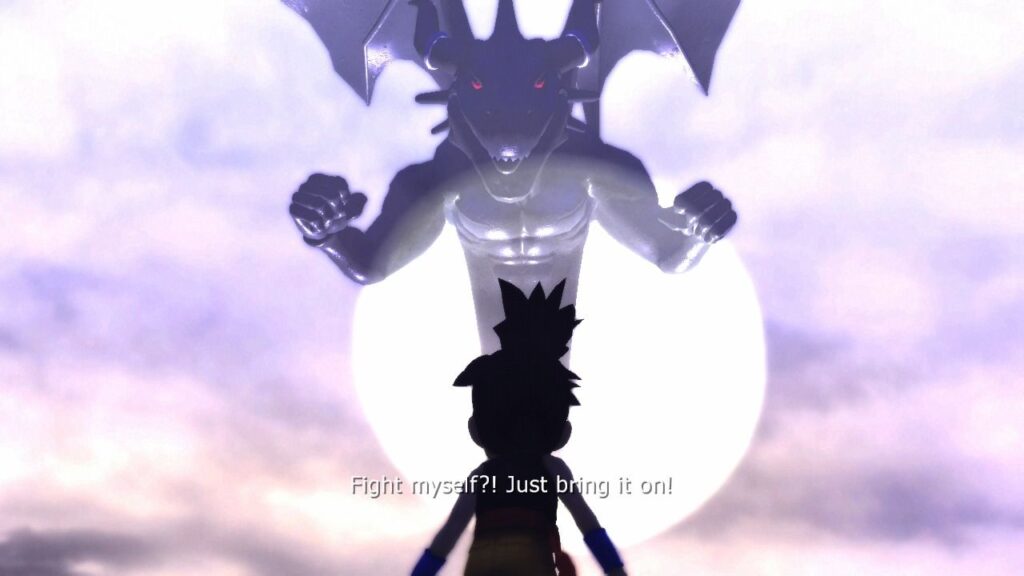
The world in Blue Dragon is an enormous and fully realized world that plays with scale, like how PlayStation JRPGs did in the 90s. In spite of the scale not being 1:1 and obviously just being a visual representation of the cast exploring the world, it is still as efficient as it ever was.
It is not long before the game stops holding your hand, and sets you loose in the world to explore it at your leisure. Sakaguchi’s team went above and beyond in delivering the most robust and detailed world map to explore.
There are many different towns with unique cultures, that are inhabited by weird races. Some of these locations can be explored out of sequence, making the discovery feel all the more rewarding.
Even tired and jaded gamers will have their heart filled with a spirit of adventure, as they comb the land for hidden treasure chests and fight optional minibosses.
In a time when a remake of Final Fantasy VII has to cut content, and avoid a world map entirely as an episodic release, Mistwalker actually goes for it. It flawlessly executes what Square Enix has been failing to do since the PlayStation 2: a fully controllable airship.
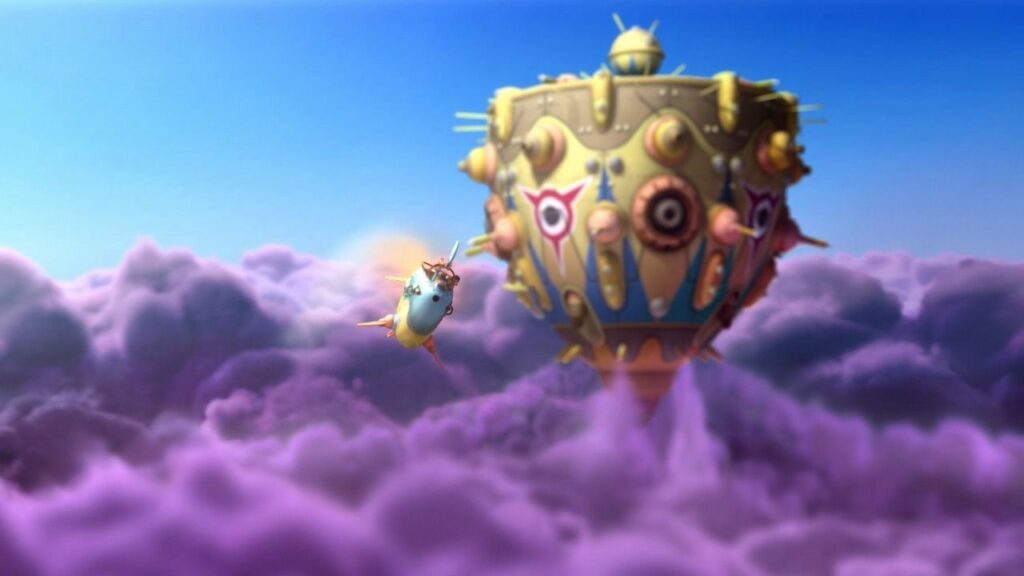
Blue Dragon may be exactly what JRPG fans have been missing for years, but it is not without its faults. It can be very easy to get lost in some of the many sprawling labyrinths, and the map system is utterly worthless. It only shows the entire world, not the map of the explored areas of a dungeon. All you get is the mini map which does not show the entire floor.
Mistwalker also went overboard with the hidden collectibles. In Blue Dragon, every single piece of geometry in the game can be examined for something, and you want to get everything… Even “nothing”.
Getting all of the “nothing” is one of the most insane side activities ever conceived for an RPG. There are over 1000, they are all spread out all over an enormous world, and there is no way to know if you got them all in one area.
Even if you don’t care about collecting “nothing”, every new town discovered means a wave of dread- having to inspect each and every individual object to find anything that might be useful, or story related. Having to endure Shu’s searching animation adds hours to an already epic quest.
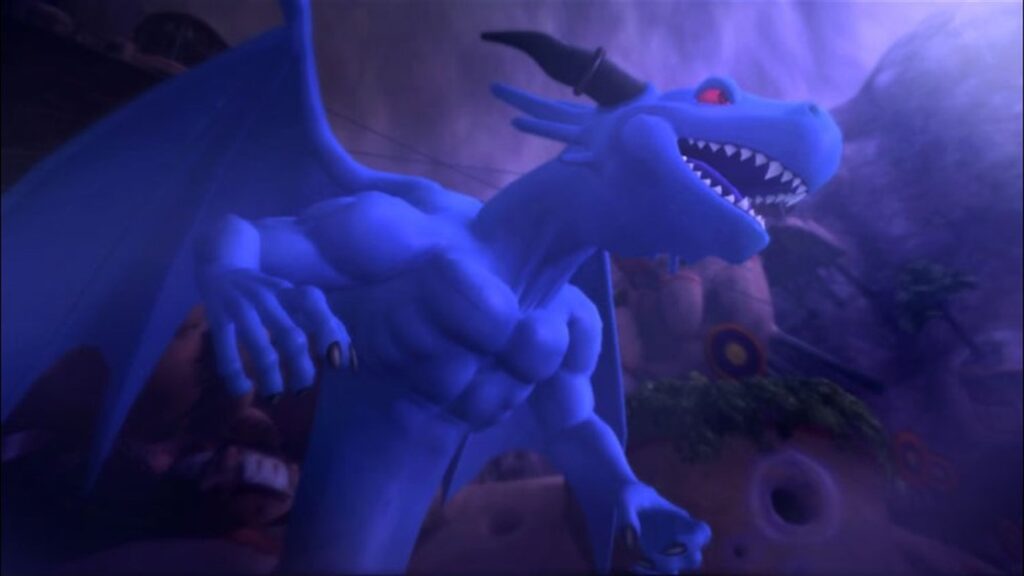
Nobuo Uematsu brings the boys to the yard with his musical compositions, and he does not disappoint here. The man’s dramatic compositions are unmatched for building a scene’s atmosphere. Even the various town music has the right kind of comforting nostalgia vibe, that puts you in the mood for some milk and cookies.
Most importantly, Uematsu utterly crushes it with what is the greatest boss battle track of all time: Eternity. Not only does Uematsu have his signature frantic pipe organ sound to it, Hironobu Sakaguchi himself wrote the most outrageous lyrics for it, and has Ian Gillian of Deep Purple sing it. The result is an insane and high octane rock ballad that shocks you, and charges your soul to lust for battle.
Eternity is such a surreal piece of music to experience in a JRPG. It is such a unique and memorable track that it becomes flawless. There has been nothing like it ever since.
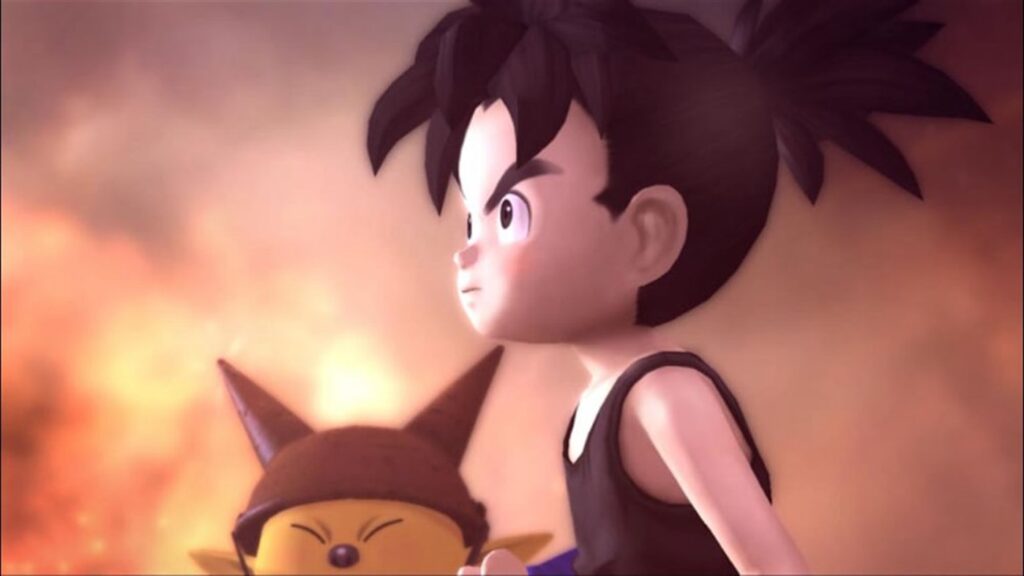
The voice cast for the party is exceptional. Some characters are seemingly flat at first, but gradually develop into fleshed out personas that you grow to appreciate. Shu is especially a complex case since he is a hot-headed and stubborn young boy for so long, who has to learn how to step away from an unwinnable situation.
Other performers manage to be very convincing as their respective characters. Blue Dragon has a huge cast of side characters and not once does the illusion falter. The style of acting is very consistent with the cartoony look and every character sounds exactly as you’d expect them to.
Nobody makes JRPGs like Blue Dragon anymore. Microsoft and Mistwalker’s ultimate throw-back was on console that rejected this kind of game. Yet it could only have happened on Xbox 360. Sadly this has never left its original platform, and never got a PC release.
Today, JRPGs are widely accepted, and gamers today can hopefully give Blue Dragon a second chance via backwards compatibility on Xbox One.
Blue Dragon was reviewed on Xbox One using a personal copy obtained by the reviewer. You can find additional information about Niche Gamer’s review/ethics policy here.